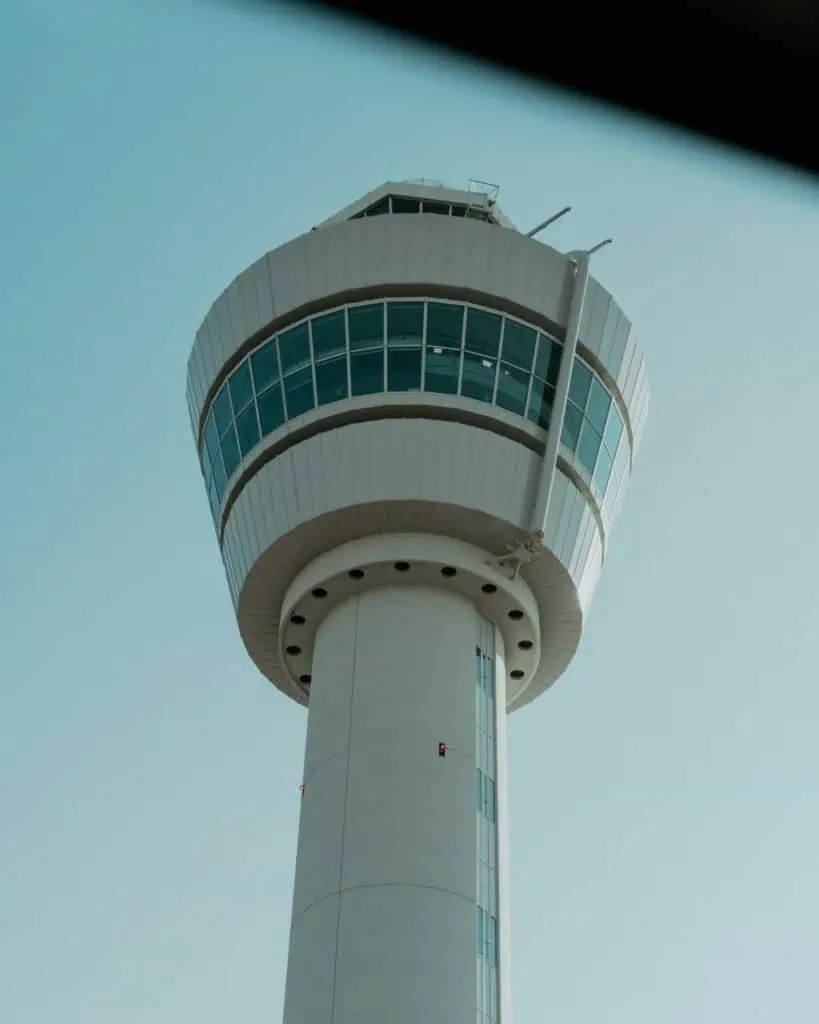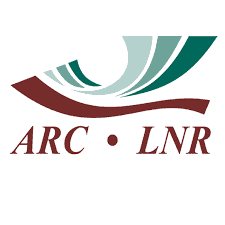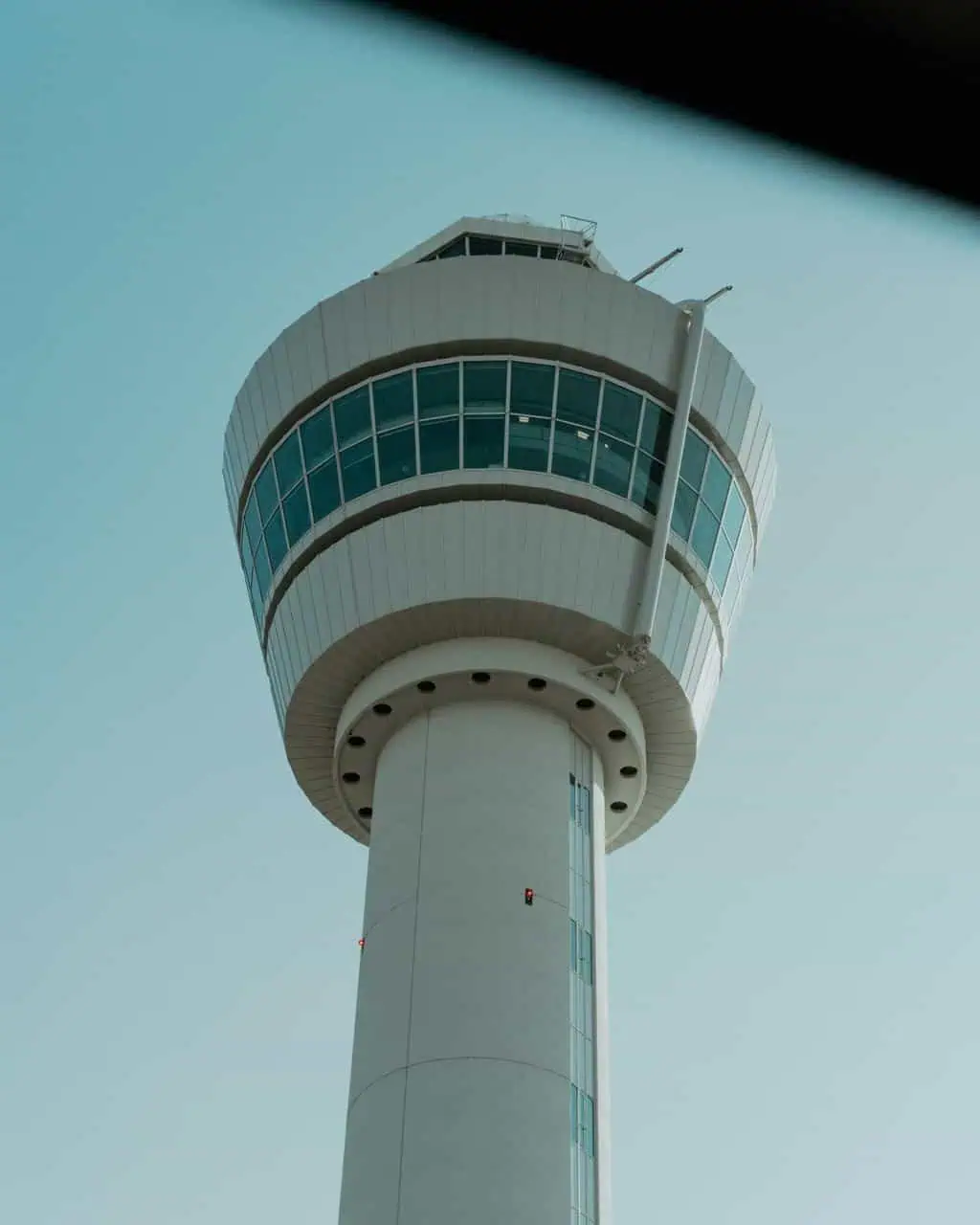Navigating the Skies for Aviation Safety and Efficiency

Managing Multiple Aircraft Simultaneously
The air traffic controller profession represents one of the most critical roles in global aviation safety, responsible for managing the movement of aircraft through controlled airspace and around airports.
These highly trained professionals coordinate safe and efficient flight operations by maintaining separation between aircraft, providing pilots with essential navigation guidance, and ensuring orderly traffic flow throughout the aviation system.
Air traffic controllers serve as the invisible guardians of the sky, maintaining safe and efficient flight operations through communication, coordination, and aircraft navigation. This role is part of our Transportation, Warehousing & Distribution Service Career series.
They must make split-second decisions while managing multiple aircraft simultaneously, often under conditions of high pressure and responsibility. Their work requires exceptional concentration, spatial awareness, and communication precision. For those seeking careers with significant responsibility and technical challenge, air traffic control jobs provide career opportunities across diverse environments, including international airports, regional facilities, military installations, and government aviation authorities.
The profession offers competitive compensation, structured advancement paths, and the satisfaction of playing a crucial role in global transportation safety.
Air Traffic Control Job Market
The global aviation industry continues to experience long-term growth despite periodic challenges, creating consistent demand for qualified air traffic controllers in international and regional airports, military bases, and private aviation companies. This critical profession remains essential to aviation infrastructure, with employment opportunities existing across government agencies, private contractors, and consulting firms specializing in airspace management.
Current job market conditions show stable demand for various air traffic control specializations, including airport tower controllers, en route traffic managers, and radar control specialists. While automation has changed some aspects of the profession, human controllers remain irreplaceable for managing complex traffic situations, emergency scenarios, and providing the judgment necessary for safe operations.
Several significant trends are reshaping the air traffic control profession:
- Aviation technology advancements including Next Generation Air Transportation System (NextGen) in the US and Single European Sky ATM Research (SESAR) in Europe
- The integration of artificial intelligence in flight control to support decision-making and traffic prediction
- Remote tower technology allowing controllers to manage airport traffic from centralized facilities
- Increasing demands for controllers with experience in unmanned aerial system (UAS) integration
As aviation continues to evolve, the fundamental importance of air traffic safety regulations, flight coordination, and emergency response protocols in aviation remains unchanged, ensuring ongoing career opportunities for qualified professionals.
Air Traffic Controller Job Availability & Global Pay Comparison 📌
Air Traffic Controller Job Availability by Region
The availability of air traffic controller positions varies globally, influenced by factors such as air traffic volume, infrastructure investment, and retirement rates among current controllers. Currently, positions are most abundant in:
- North America: FAA in the United States, NAV CANADA, and regional control centers
- Europe: EUROCONTROL, national aviation authorities, and major hub airports
- Asia-Pacific: Growing aviation markets in China, Singapore, and Australia
- Middle East: Expanding aviation hubs in UAE, Qatar, and Saudi Arabia
- Oceania: Airways New Zealand and Airservices Australia
Air traffic controller jobs are available across diverse settings, including commercial airports, military bases, private aviation firms, and government airspace management agencies. The industry particularly values controllers with expertise in radar monitoring, radio communication, and emergency response.
Most positions require rigorous certification through authorities such as FAA (USA), CAA (UK), CASA (Australia), or ICAO certification, as well as intensive training programs that combine classroom instruction with simulator experience and on-the-job training.
Average Air Traffic Controller Salary Comparison (Annual)
| Region | Entry-Level | Mid-Career | Senior/Specialized |
| USA | $80,000 – $100,000 | $100,000 – $130,000 | $130,000 – $150,000+ |
| UK | £50,000 – £70,000 | £70,000 – £90,000 | £90,000 – £120,000+ |
| Canada | CAD $75,000 – $90,000 | CAD $90,000 – $120,000 | CAD $120,000 – $140,000+ |
| Australia | AUD $90,000 – $110,000 | AUD $110,000 – $140,000 | AUD $140,000 – $160,000+ |
| New Zealand | NZD $70,000 – $90,000 | NZD $90,000 – $110,000 | NZD $110,000 – $130,000+ |
| Europe | €50,000 – €80,000 | €80,000 – €110,000 | €110,000 – €140,000+ |
| Asia & South America | $30,000 – $50,000 | $50,000 – $70,000 | $70,000 – $100,000+ |
Compensation often reflects the complexity of the airspace controlled, with major facilities handling dense traffic typically offering higher salaries. Many jurisdictions also provide premium pay for night shifts, weekends, and holidays, as air traffic control is a 24/7 operation.
Career Potential Grade for Air Traffic Controllers
⭐⭐⭐⭐⭐ High Career Growth Potential in Aviation Safety & Airspace Management
The career trajectory for air traffic controllers offers excellent growth potential, particularly for those who demonstrate exceptional skill in high-pressure situations and pursue specialized training. Career advancement typically depends on a combination of factors including operational experience, additional certifications, and specialized expertise in particular types of airspace management.
Many controllers begin in smaller facilities before advancing to busier, more complex environments. With experience, air traffic controllers can transition into flight safety management, aviation consultancy, or airport operations leadership roles that leverage their extensive knowledge of aviation procedures and regulations.
Essential Skills and Requirements for Air Traffic Management 📌
Radar Systems and Aircraft Tracking Expertise
Professional air traffic controllers must develop advanced proficiency in monitoring and directing aircraft movements for takeoff, landing, and mid-flight navigation. This includes mastery of radar systems, understanding aircraft performance characteristics, and visualizing three-dimensional airspace. Controllers must maintain situational awareness of all aircraft within their jurisdiction while anticipating potential conflicts and planning traffic flow.
Communication Procedures for Air Traffic Controllers
Effective communication & radio operations are fundamental to air traffic safety. Controllers must relay flight instructions clearly to pilots, ground crews, and airport authorities using standardized phraseology and protocols. This requires exceptional verbal clarity, active listening skills, and the ability to convey complex instructions concisely and without ambiguity. Controllers must also coordinate seamlessly with adjacent facilities when transferring control of aircraft.
Airport Control Tower Operations Management
Controllers working in tower positions require specialized knowledge of airport layout, ground movement procedures, and visual observation techniques. They manage complex surface operations including runway assignments, taxi routes, and maintaining safe separation between aircraft on the ground. Tower controllers must also coordinate with terminal and en-route facilities to ensure smooth transitions between different phases of flight.
Emergency Response Protocols in Aviation
All controllers receive intensive training in handling flight diversions, airspace congestion, and aviation emergencies. This includes procedures for assisting aircraft experiencing mechanical problems, medical emergencies, severe weather conditions, and security threats. Controllers must remain calm under pressure, quickly assess situations, and provide decisive guidance to ensure safety during critical incidents.
Air Traffic Safety Regulations and Compliance
Controllers must maintain comprehensive knowledge of ICAO, FAA, and CAA regulations governing airspace management and flight safety. This includes understanding separation standards, airspace classifications, weather minimums, and special use airspace restrictions. Staying current with changing regulations and procedures is essential, as is maintaining detailed documentation of all air traffic actions and decisions.
Air Traffic Controller Career Advancement Paths 📌
Entry-Level Air Traffic Control Positions
Most air traffic control careers begin with rigorous training and initial positions that build foundational skills:
- Air Traffic Control Trainee: Undergoes formal classroom and simulator instruction while working under close supervision
- Ground Control Assistant: Focuses on airport surface movement and coordination with pilots during taxi operations
- Radar Monitoring Specialist: Develops skills in tracking aircraft and maintaining separation in less complex airspace
These positions typically require passing initial aptitude assessments and medical examinations, followed by intensive academy training that combines theoretical knowledge with practical applications.
Mid-Level Air Traffic Management Roles
With experience and demonstrated competence, controllers advance to positions with greater responsibility:
- Certified Air Traffic Controller: Independently manages air traffic in assigned sectors with full certification
- En Route Air Traffic Manager: Specializes in handling aircraft during cruise phase in designated airspace sectors
- Terminal Approach Control Officer: Manages arrivals and departures in the complex airspace surrounding busy airports
These positions often require additional specialized certifications and demonstration of proficiency in handling increasingly complex traffic scenarios.
Senior Air Traffic Control Leadership Positions
Experienced controllers with exceptional skills and leadership abilities can progress to:
- Chief Air Traffic Controller: Oversees operations and staff at a specific facility or sector
- Aviation Safety Inspector: Evaluates compliance with regulations and investigates incidents
- Airport Operations Manager: Coordinates between air traffic control, airlines, and other airport stakeholders
These roles combine operational expertise with management responsibilities, often requiring additional qualifications in leadership and aviation management.
Advanced Aviation Safety and Regulatory Careers
The most experienced controllers may eventually transition to:
- Director of Airspace Operations: Develops strategic airspace management policies at national or regional levels
- International Aviation Safety Consultant: Advises governments and organizations on air traffic system optimization
- Government Aviation Policy Advisor: Shapes regulations and standards for air navigation services
Many air traffic controllers successfully transition into aviation regulation, airspace planning, or senior airport management roles after establishing their operational expertise. These advanced positions often require additional education in aviation management, regulatory policy, or business administration.
Air Traffic Controller Resume Tips
When creating your air traffic controller resume, focus on showcasing your flight navigation expertise, radio communication skills, and emergency management experience. The most effective format for aviation professionals typically includes a chronological layout highlighting progressive responsibility in airspace management.
Begin with a powerful professional summary that emphasizes your certification level, years of experience, and specialized areas of expertise. For example: “FAA-Certified Terminal Approach Controller with 8+ years of experience managing high-density airspace operations at major international airports. Specialized in emergency response coordination and implementation of NextGen navigation technologies.”
Essential Sections for Air Traffic Control Applications
Your resume should highlight expertise in aviation safety regulations, decision-making under pressure, and air traffic monitoring systems. Key sections to include:
- Professional Certifications: List all relevant credentials such as FAA Air Traffic Controller License, ICAO Safety Training, and Aviation Radar Systems Certification
- Technical Skills: Detail specific systems proficiency (STARS, ERAM, ADS-B, etc.)
- Operational Experience: Quantify your experience with metrics such as operations per hour, facility complexity level, and types of airspace managed
- Emergency Management: Highlight specific challenging situations successfully resolved
- Continuous Training: Show commitment to professional development through advanced courses and recertification
How to Write an Air Traffic Controller Cover Letter
Your application letter should demonstrate your understanding of the specific facility’s operations and challenges. Begin with a clear statement of your certification level and years of experience, then connect your specific skills to the employer’s operational requirements.
In the body of your cover letter, highlight 2-3 specific achievements that showcase your capabilities in traffic management, safety enhancement, or operational efficiency. Close by expressing enthusiasm for contributing to the organization’s aviation safety mission and referencing any connections you have to current employees or the facility itself.
Many applicants benefit from using a resume builder or cv maker that offers templates optimized for technical aviation positions, ensuring all crucial information is presented effectively and professionally. These tools can help ensure your application meets industry standards while highlighting your unique qualifications.
Air Traffic Controller Interview Questions and Preparation Guide 📌
Common Air Traffic Control Interview Questions
The interview process for air traffic controller positions typically combines standard employment questions with technical assessments of operational knowledge and situational judgment. Prepare thoroughly for these frequently asked questions:
- “How do you manage multiple aircraft in congested airspace?” Describe your systematic approach to traffic sequencing, separation techniques, and workload management during high-volume periods.
- “What steps do you take when an aircraft experiences an in-flight emergency?” Outline your emergency response protocol, including coordination with supervisors, adjacent facilities, and emergency services while prioritizing the affected aircraft.
- “How do you ensure clear and accurate communication with pilots and ground staff?” Explain your use of standard phraseology, active listening techniques, and verification procedures to prevent miscommunication.
- “Describe a challenging traffic situation you’ve encountered and how you resolved it.” Structure your answer to demonstrate your decision-making process, prioritization skills, and ability to maintain safety while resolving conflicts.
Technical Knowledge Preparation
Before your interview, thoroughly research aviation authority guidelines, radar control procedures, and emergency airspace regulations relevant to the facility. Be prepared to demonstrate knowledge of:
- Flight tracking systems and surveillance technologies used at the specific facility
- Air traffic reporting protocols and documentation requirements
- Aviation meteorology and its impact on traffic management decisions
- Local airspace structure, common traffic flows, and special use areas
Simulation and Performance Assessment
Many air traffic control interviews include simulator scenarios or performance exercises. To prepare:
- Practice with online air traffic control simulators for training and assessment
- Familiarize yourself with common scenario types (equipment outages, weather events, emergency aircraft)
- Review standard operating procedures for the type of facility (tower, approach, center)
- Develop strategies for verbalizing your decision-making process during assessments
Success in air traffic controller interviews requires demonstrating both technical knowledge and the personality traits essential to the profession: calm under pressure, clear communication, decisive action, and meticulous attention to detail.
International Air Traffic Control Opportunities and Considerations 📌
Best Aviation Authorities for Air Traffic Control Careers
The global aviation industry offers diverse opportunities for air traffic controllers, with significant variations in working conditions, compensation, and career advancement across different regions and organizations.
Top Organizations for Air Traffic Controller Employment:
- Federal Aviation Administration (USA): Largest employer of controllers with facilities nationwide
- NATS (UK): Handles UK airspace with advanced technology and competitive compensation
- DFS (Germany): Known for excellent training and sophisticated air traffic management systems
- NAV CANADA: Non-governmental organization managing Canadian airspace with innovative approaches
- Airservices Australia: Respected for work-life balance and progressive training methods
- EUROCONTROL: Manages pan-European air traffic with opportunities for international experience
- Emirates Aviation Services: Offers premium compensation in the growing Middle Eastern aviation sector
How to Transition from Military Aviation to Civilian Air Traffic Control
Military air traffic controllers have valuable skills that transfer well to civilian operations. Key considerations for this transition include:
- Understanding the different certification requirements between military and civilian systems
- Leveraging Veterans’ preference in government hiring (particularly in the US)
- Identifying which military qualifications may receive credit toward civilian certification
- Preparing for different phraseology and procedural differences in civilian operations
- Networking with former military controllers who have successfully transitioned
Many countries offer expedited certification pathways for controllers with military experience, recognizing the valuable training and operational experience they bring to civilian airspace management.
International Air Traffic Control Certification Differences
When considering international opportunities, be aware of certification differences:
- Different medical standards and examination requirements between jurisdictions
- Varying age restrictions for entry and mandatory retirement
- Language proficiency requirements (ICAO Level 4 English proficiency is typically minimum)
- Recognition (or lack thereof) of certifications between countries
- Licensing transfer agreements between certain national authorities
Controllers interested in international careers should research specific requirements for their target countries and consider whether their existing certifications offer any reciprocity or accelerated pathways.
Future Trends in Air Traffic Management and Aviation Technology 📌
Aviation Technology Advancements and Their Impact
The air traffic control profession is experiencing significant technological evolution that will reshape controller roles and responsibilities:
- Implementation of NextGen/SESAR technologies including Performance-Based Navigation (PBN) and Automatic Dependent Surveillance-Broadcast (ADS-B)
- Development of trajectory-based operations allowing more precise traffic planning
- Remote tower technology enabling centralized management of multiple smaller airports
- Data communications (DataComm) reducing reliance on voice communications and increasing information exchange capacity
These advancements are changing how controllers manage traffic, with greater emphasis on strategic planning and system management rather than tactical control.
Artificial Intelligence in Flight Control Systems
The integration of AI and automation is creating both challenges and opportunities:
- Decision support tools that suggest optimal traffic sequencing and conflict resolution
- Predictive systems that identify potential conflicts earlier and with greater accuracy
- Automated handling of routine communications and clearances
- Enhanced weather prediction and integration with traffic management systems
While these technologies aim to support controllers rather than replace them, they will require new skills and adaptation to changing operational paradigms.
Unmanned Aircraft System Integration
The rapid growth of drone operations presents new challenges for traffic management:
- Development of Unmanned Aircraft System Traffic Management (UTM) systems
- Integration of commercial drone operations into controlled airspace
- New separation standards and procedures for mixed manned/unmanned operations
- Specialized controller training for managing diverse aircraft types with varying performance characteristics
Controllers with expertise in UAS integration will likely find increasing opportunities as this sector continues to expand.
Conclusion: Building a Successful Air Traffic Controller Career 📌
The air traffic controller profession offers a compelling combination of technical challenge, responsibility, and career stability. With strong global demand, competitive compensation, and multiple advancement pathways, air traffic management remains an attractive career choice for those with the appropriate aptitude and interest in aviation safety.
Success in this field requires exceptional concentration, spatial awareness, decision-making ability, and communication skills. By building a foundation of core operational expertise, pursuing relevant certifications, and developing specializations aligned with industry trends, aspiring air traffic controllers can construct rewarding and durable careers in this essential aviation safety profession.
To maximize your potential in the air traffic control profession:
- Pursue specialized training in emerging technologies such as NextGen systems, remote tower operations, and UAS integration
- Develop comprehensive knowledge of aviation regulations and procedures across different types of airspace and operations
- Build proficiency with advanced air traffic management systems and decision support tools
- Cultivate both technical expertise and effective communication skills with pilots, colleagues, and stakeholders
- Establish a continuous learning mindset to adapt to evolving technologies and procedures in aviation
Whether you’re preparing your first application for an air traffic control training program or advancing toward a specialized position in aviation safety management, approach your career with both technical precision and strategic vision. The field rewards those who combine fundamental operational knowledge with adaptability to the evolving aviation environment.
Use the resources at CV4Students to create a professionally structured air traffic controller resume that showcases your technical capabilities and safety-focused experience. With the right preparation and continuous skill development, you can build a rewarding and financially stable career in this essential aviation profession that will remain vital throughout ongoing advances in flight technology.
Explore More in This Industry
Looking for other career options in this field?
👉 View more Transportation, Warehousing & Distribution Service Careers.
Resources & Organizations
These featured organizations play an active role in advancing pest management, scientific research, and agricultural development through education, policy, and innovation.

The African Association of Insect Scientists (AAIS) is a professional body committed to strengthening entomological science across Africa through research, education, and pest management innovation.
Visit Site →

The New Zealand Plant Protection Society promotes the science and practice of plant protection through conferences, publications, and collaboration with growers, researchers, and pest control professionals.
Visit Site →

The Agricultural Research Council of South Africa – Plant Protection leads national research efforts in crop protection, biosecurity, pest diagnostics, and integrated pest management (IPM) for sustainable agriculture.
Visit Site →
These organizations are featured for their outstanding contributions to pest management science, training, and global agricultural development.
This Air Traffic Controller Career Guide provides general information about the profession globally. Specific requirements, compensation, and opportunities may vary by region, employer type, and individual qualifications. Always research current conditions in your target market when making career decisions.
